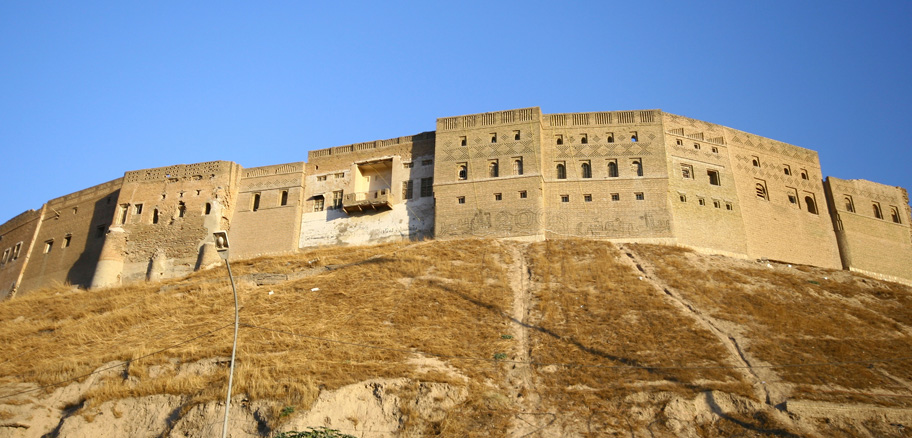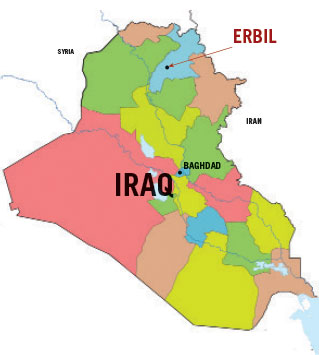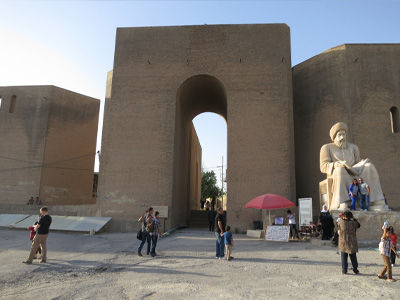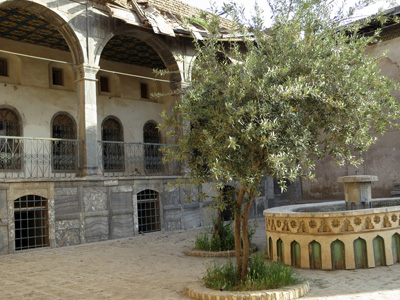
Saving the Past from a Modern World
The challenge of historic preservation
Amid armed conflict, bombardment, theft, and damage from military occupations, conservationists struggle to protect Iraq’s more than 10,000 heritage sites. They must also contend with the natural corrosion to both the physical and ancestral that comes with the passage of time. Now, UTSA has joined the effort to help preserve these historic areas.
Away from the ongoing violence that usually dominates headlines about Iraq sits Erbil, the nation’s fourth-largest city and the Kurdistan capital. The autonomous region has become known not just for its current political stability but also as an up-and-coming tourist destination.
And at the heart of Erbil is the ancient citadel, believed to be one of the oldest continuously inhabited settlements in the world, tracing its origins back to at least 6000 B.C.
But growing prosperity in the northern Iraq region has led to increased demand for the accouterments of modern society.
An influx of oil money and young professionals has helped change the landscape, with urban sprawl fanning out around Erbil. There’s even a burgeoning luxury housing market. The Arab Council of Tourism also named the city as the Arab Tourism Capital for 2014.
How to embrace the future without forgetting, or destroying, the past is a challenge faced by conservationists worldwide, and attention has already turned to Erbil.
So when UTSA College of Architecture professors William Dupont and Angela Lombardi were invited to take part in a program of training seminars in Erbil focusing on heritage preservation, they were eager to participate.
“The historic cities are very complex, because we have these very ancient sites and at the same time we have the new developments, and there is no integration between [them],” Lombardi said.
Dupont, the director of the UTSA Center for Cultural Sustainability, is also the university’s San Antonio Conservation Society Endowed Professor. Lombardi, who hails from Rome, Italy, and received her doctorate from the University of Rome, specializes in the preservation of masonry facades and traditional construction techniques.
With the program now in its second year, Lombardi will make her fifth visit to Erbil this summer; Dupont has visited twice.
The professors joined an international group organized by World Monuments Fund (WMF) to train Iraqi heritage professionals to conserve and manage their heritage sites. Both Erbil’s citadel and Babylon—one of the most important archaeological sites in the world—are under consideration for nomination to UNESCO’s World Heritage Site list, according to WMF. Lisa Ackerman, executive vice president and chief operating officer of WMF, said the agency brought experts from around the world including the United States, the U.K., Lebanon, Italy and Germany. Ackerman spoke in March at UTSA about WMF projects worldwide, including the work Dupont and Lombardi did in Iraq.
“I think that what’s happening in the Kurdish region is that there’s a tremendous awareness of the value of heritage,” she said. “If you leave the city and drive out into the surrounding countryside, there are pristine landscapes and thousands of archaeological sites.”
Under Saddam Hussein the population was mostly cut off from the outside world, and now the local conservationists are playing catch-up. Ackerman said the goal was to share information with Kurdish and Iraqi conservationists about international standards and procedures, as well as ways that other countries and cities approach preservation.
“I think that they understand that they were isolated from the international heritage conversation community and are eager to connect with colleagues,” Ackerman said. “Our training courses are windows into what everyone else is doing in conservation. We really emphasized the experiences of people who worked extensively in the region.”
Dupont and Lombardi spent most of their first visit in 2013 in the classroom. They had 10 students—archaeologists, historians and engineers. Four were Kurdish and six were Iraqi, so the professors needed two interpreters to simultaneously translate their lectures into both Kurdish and Arabic.
Dupont was able to relate the situation in Erbil to that of the local quest to get San Antonio’s Spanish missions named as a World Heritage Site.
“The students were very eager to learn international standards and understand them,” Dupont said. “We learned a lot about what their top concerns were. At Babylon, one of the biggest concerns was with local farmers who were constantly seeding, plowing and working the fields where there are archaeological resources.”
One of the challenges, Lombardi said, was figuring out a way to address the interests of all of the students, since the younger Kurds were “a lot less focused on technical issues [than on] cultural issues, tourism, management. On the other side, the people from Babylon were very interested in all the technical issues; the communication, assessment and conservation.”
The professors did get to visit some sites, including the citadel. Called a “tell,” which means an occupied mound, the citadel has been built upon over multiple centuries, Dupont said.
The mound rises to about 30 meters, or nearly 99 feet, according to the High Commission for Erbil Citadel Revitalization.
“It’s walled, so right in the center of the city there is this giant fortress that just rises up with very high walls around it,” he explained. “It is very impressive.”
The work at the citadel is extensive. Thousands of people who lived in what had become an impoverished area were evicted. Restoration will include adding basic services such as sewer and water lines, and the citadel will likely become more upscale.
“It was a fabulous opportunity to get involved in a place we would not otherwise get an opportunity to go,” Dupont said. “Travel there is very difficult. Even for Iraqis traveling in their own country, it’s not safe.”
Whether Lombardi and Dupont could stay safe became the key to participating in the program at all. University insurance doesn’t cover travel to Iraq, Afghanistan and Iran. The university’s Office of International Programs and Department of Environmental Health, Safety and Risk Management hustled to get all the necessary permission and paperwork.
John DeLaHunt, risk and life safety manager in the environmental health, safety and risk management department said that he and his colleagues at UT System had about three weeks to convince the insurance company that going to Erbil wasn’t a bad decision.
“This trip is about training architects and archaeologists all across the Middle East how to preserve their heritage,” DeLaHunt said. “Really, it’s our heritage too. It’s Mesopotamia. And the bonds they are making are healing the damage of war.”
Dupont, too, saw the training as a way to give back.
“Some of their sites have been exposed and unprotected and specifically damaged by activities that have happened in the war on terrorism, and not just by American forces but by coalition forces,” he said. “I think people wanted to do their part to help make the situation better in Iraq.”
In her return visits, Lombardi has seen the students in the first class graduate from the program. She reviewed the work they had created, and participated in the graduation ceremony.
“I think, and I don’t want to be immodest, but we did a good job,” Lombardi said. “The second time that I went there in June, everybody was more relaxed. The students really showed they were very interested, very involved and very eager to learn and be updated. So, from a professor’s point of view, it was a great experience.”



